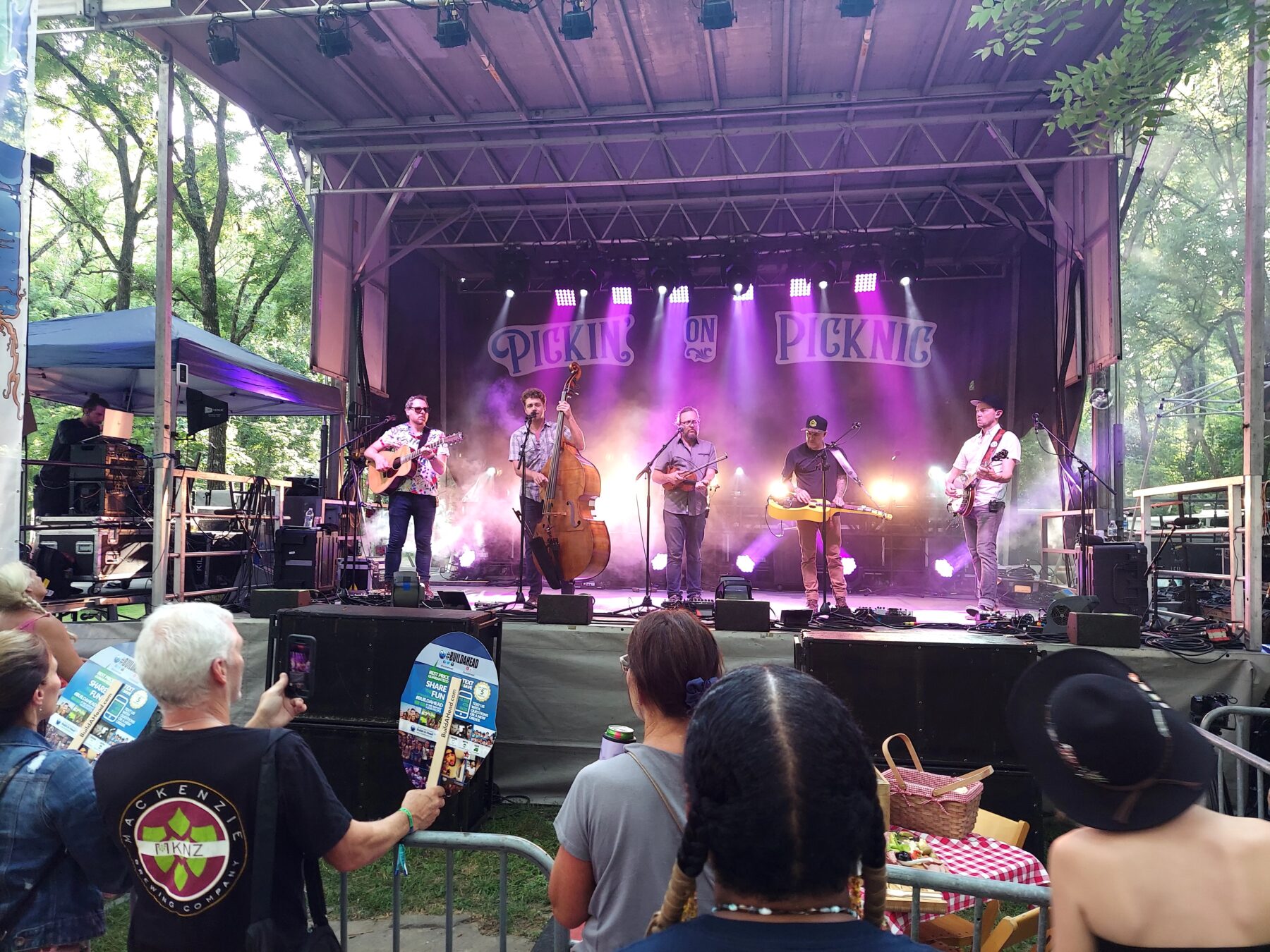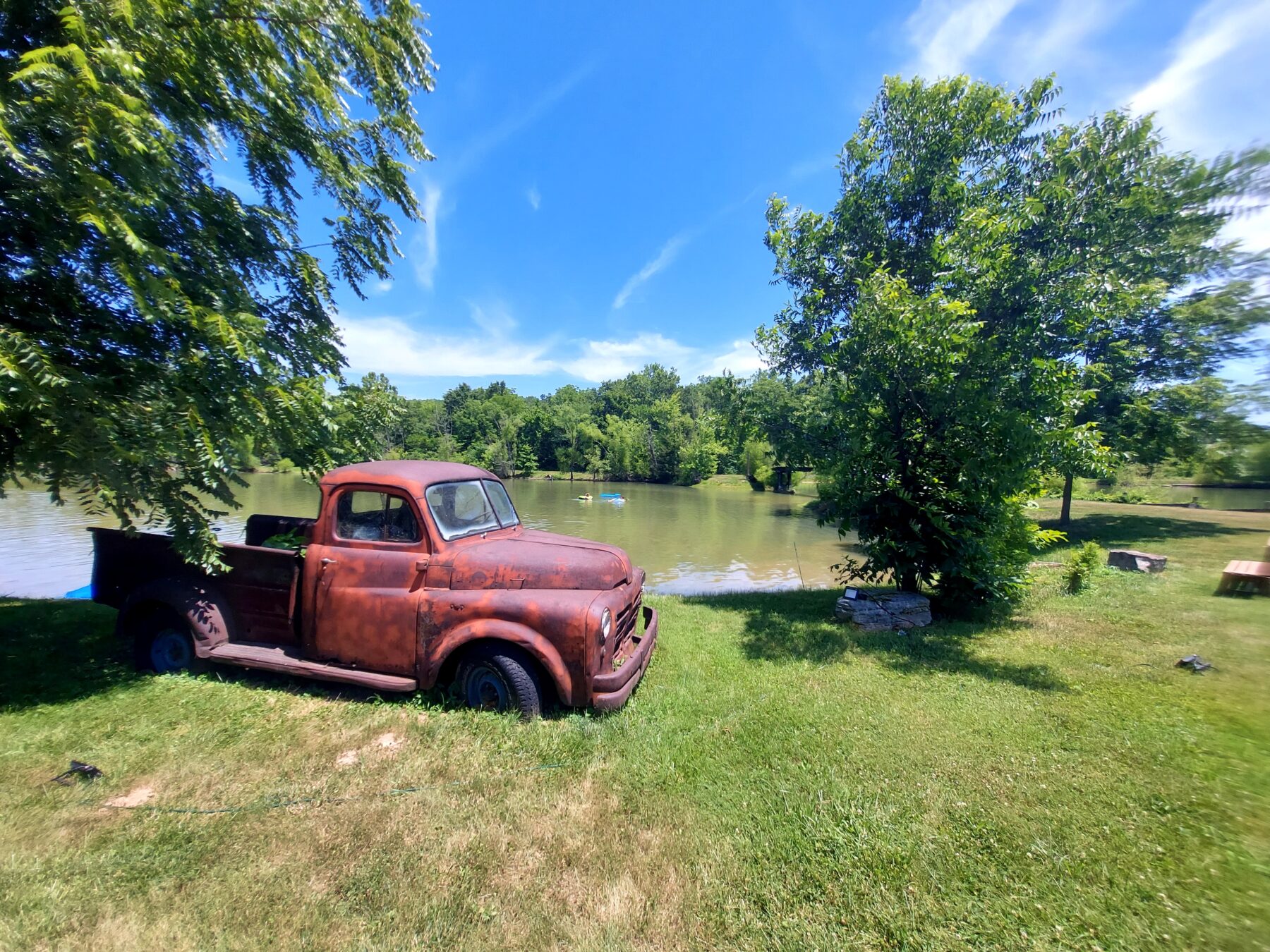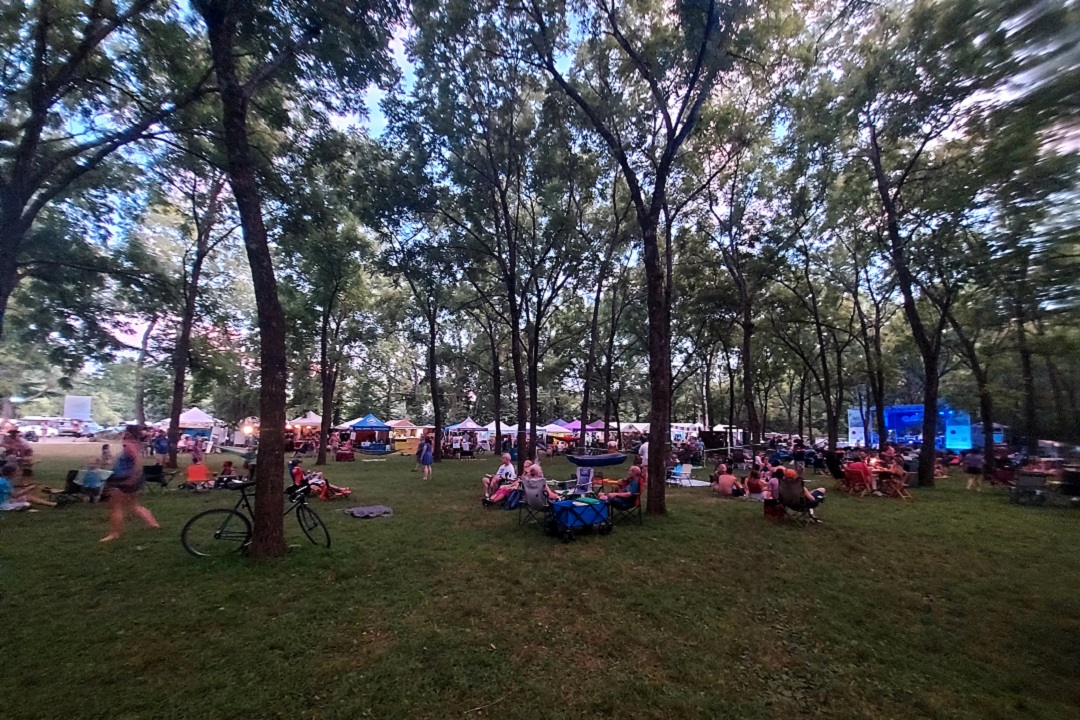“This has to be the most ‘Missouri’ thing ever,” I said out loud as I surveyed the bucolic water-and-woods landscape at the Pickin’ on Picknic bluegrass festival in July.
Hosted at the Lost Hill Lake Events campground in St. Clair, Missouri, just an hour away from St. Louis County, the venue offers access to both a lake and the Meramec River, a gorgeous walnut grove, soaring bluffs, and loads of open space for tents and RVs — all of which made it the ideal setting for an eventful weekend outside.
The annual Pickin’ on Picknic festival ran for four days this year, July 7 through 10, and with no shortage of things to do on site, many ticket-holders had headed down early in the week to set up camp, settle in, and enjoy the scenic attractions.
After prepping our own site, we started our extended weekend on Friday by exploring some nearby trails, which took us across Lost Hill Lake and up, up, up to “Thinking Rock.” Though we’d embarked on a whim, only following some curious signage, the half-mile hike was well worth it once we reached the top, where a craggy rock garden overlooked the Meramec below.
Our adventure continued into the heart of the event, primarily set up under the massive walnut tree grove that provided welcome shade to help beat the sun and heat. The grove had two stages, one on each end, where bluegrass musicians like Yonder Mountain String Band, The Infamous Stringdusters, and Peter Rowan played throughout the day. If one stage wasn’t busy, you knew the other was full. The area also featured vendor booths, food trucks, a kids’ corner, and plenty of hangout space for hammocks and concertgoers on camp chairs and blankets.

The Infamous Stringdusters. (Brad Kovach)
After getting the lay of the land, we headed over for a dip in the lake, complete with rope swings, canoes, and rafts for free use. This area is surrounded by Lost Hill Lake’s glamping facilities, which include a number of renovated school buses, Apache campers, and Volkswagen vans. While we didn’t get the chance to peek inside any of them, I loved the patio areas with adorable furniture and lights that really added to the “glam” factor.
Music started around 4 p.m. the first day, the artists alternating between the two stages as people followed their playing or explored the vendor booths. Many of the shops featured tie-dye clothing, crystals, and handmade jewelry and goods — perfect for this somewhat hippie-dippy music festival. There was no shortage of food, either, from chicken and veggie wraps to sweet treats like slushies and ice cream to almost anything covered in cheese.
While bluegrass music isn’t something I regularly seek out, these bands knew how to connect with the crowd and keep the stoke high. In fact, many of the musicians hung out as regular festival-goers after their sets were done. All evening long, you could find the stage-fronts jammed full of people dancing and hanging out, digging the twangy sounds and bumping beats. Though I didn’t know too many of the songs, the energy was undeniable, and the inspiration drawn from some of the greats, like the Grateful Dead, was awesome to hear live.
Just in case we were craving even more music, a late-night band went on an hour after the headliner, around 12:30 a.m., followed by even more jam sessions and bonfires in the camping area — enough options to keep the party going all through the night.
Saturday featured music starting earlier in the day, along with other organized activities like sunrise yoga and blacksmithing workshops. Of course, there was even more swimming, eating, chilling out, and enjoying the company of new neighbors and friends. By the time we began to clear out on Sunday, it was hard to say goodbye.

Lost Hill Lake. (Brad Kovach)
The good news is Lost Hill Lake has lots of camping sites, both glam and traditional, that are accessible throughout the year. Not only is the venue family (and pet!) friendly, but it also hosts weddings, retreats, and other special events, a testament to both its beauty and convenience as a destination.
Author: Erika Kovach is a contributor to Terrain Magazine.


Leave A Comment